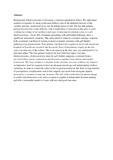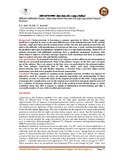| dc.contributor.author | Jani, PG | |
| dc.contributor.author | Gill, H | |
| dc.contributor.author | Kotecha, V | |
| dc.date.accessioned | 2014-02-26T06:59:11Z | |
| dc.date.available | 2014-02-26T06:59:11Z | |
| dc.date.issued | 2012 | |
| dc.identifier.citation | Jani PG, Gill H, Kotecha V. "Difficult Gallbladder Surgery, Improving Patient Outcomes Through Appropriate Surgical Decisions." East and Central African Journal of Surgery. Submitted;17(1).2012 | en_US |
| dc.identifier.uri | https://profiles.uonbi.ac.ke/jani/publications/difficult-gallbladder-surgery-improving-patient-outcomes-through-appropriate-surgi | |
| dc.identifier.uri | http://www.ajol.info/index.php/ecajs/article/view/76499 | |
| dc.identifier.uri | http://hdl.handle.net/11295/64971 | |
| dc.description.abstract | Background: Cholecystectomy is becoming a common operation in Africa. The right upper quadrant is regarded by many as the most difficult area of the abdomen because of the variable anatomy, small sized ducts and the irritant nature of bile. The fact that patients present late also adds to the difficulty with identification of structures in this area. A good working knowledge of the incidence and types of anatomical variations is key to a safe cholecystectomy. About 50% of patients presenting with gallbladder pathology show a significant anatomical variations. This study aimed to improve awareness amongst surgeons, both consultants and those in training to improve patient outcomes with gall bladder pathology.
Case presentations: Four patients who had re-do surgeries at three different private hospitals in Nairobi are presented and discussed. None of the primary surgery in the four cases was done any of the authors. The re-do surgery in the four cases was performed by the principal author. The four patients respectively had a bile duct injury post open cholecystectomy, cholecystostomy done for gall bladder empyema, a stricture from a previous biliary-enteric anastomosis and obstructive jaundice from chronic pancreatitis.
Conclusion: The large number of variations in the anatomic structure of biliary tree imposes an imperative need for surgeons to have an adequate knowledge and understanding of those variations, in order to control the safety of the surgical procedure in this field. A large number of postoperative complications seen in this surgical area result from iatrogenic injuries incurred by a variation of anatomic elements. The role of the medical boards should change to confer consultant status only after a surgeon is capable of independent decision-making and after a reasonable number of cases with recorded good outcomes | en_US |
| dc.language.iso | en | en_US |
| dc.publisher | University of Nairobi | en_US |
| dc.title | Difficult gallbladder surgery, improving patient outcomes through appropriate surgical decisions | en_US |
| dc.type | Article | en_US |


